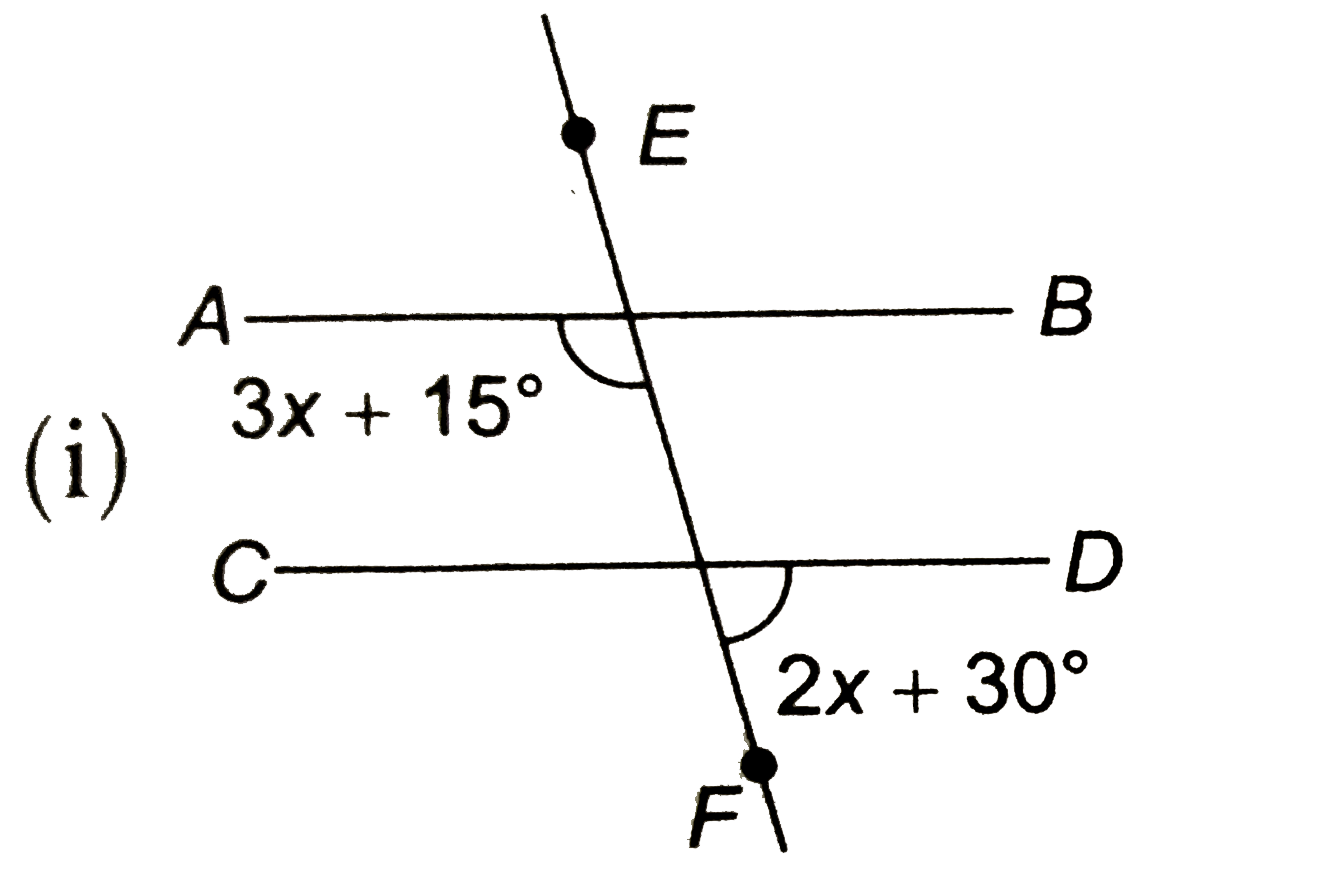दी गई आकृति में, रेखा m , रेखा n के समांतर है । दिया है की
∠BAP=3x+10∘,∠BAC=3x,
∠ABC=3y−5∘,∠ACB=x+y+5
x और y के मान ज्ञात कीजिय |

दिया है m||n
∴ ∠PAB=∠ABC
⇒ 3x+10∘=3y−5∘ ( एकांतर कोण )
⇒ 3x−3y=−15∘
⇒ x−y=−5∘ …(1)
अब, ∠BAC+∠CBA+∠ACB=180∘ ( एक त्रिभुज के सभी कोनों का योग 180∘ होता है )
⇒ 3x+(3y−5∘)+(x+y+5∘)=180∘
⇒ 4x+4y=180∘
⇒ x+y=45∘ ...(2)
समीकरण (1) से (2) को हल करने पर,
x=20∘और y=25∘
Topper's Solved these Questions
- रेखाएं और कोण BOOK - NOOTAN HINDICHAPTER - रेखाएं और कोण EXERCISE - प्रशनावली 6A
19 Videos
- रेखाएं और कोण BOOK - NOOTAN HINDICHAPTER - रेखाएं और कोण EXERCISE - प्रशनावली 6B
31 Videos
- रचनाएँBOOK - NOOTAN HINDICHAPTER - रचनाएँEXERCISE - विविध प्रश्नावली
7 Videos
- वृत्त BOOK - NOOTAN HINDICHAPTER - वृत्त EXERCISE - विविध प्रश्नावली (दीर्ध उत्तरीय प्रश्न)
5 Videos
Similar Questions
दो कोण 4:5 के अनुपात में है । कोण ज्ञात कीजिय यदि वे एक - दूसरे के (i) पूरक है, (ii) सम्पूरक है ।
View Solutionयदि AB||CD तो प्रत्येक में x का मान ज्ञात कीजिय ।

View Solutionनिम्नलिखित कोणो को बनाइए:
(i) 60∘ (ii)90∘ (iii) 120∘ (iv) 180∘ (v) 270∘
View Solutionएक वृत्त की दो जीवायें AB और CD केन्द्र के एक ही ओर इस प्रकार हैं कि AB = 6 सेमी, CD = 12 सेमी और AB∣∣CD हैं | यदि AB और CD के मध्य दूरी 3 सेमी है, तो वृत्त की त्रिज्या ज्ञात कीजिए |
View SolutionDetermine the point of symmetry of a regular hexagon.
View SolutionDtermine the images of the following figure about the given line :
View SolutionMatch the following Column A to Column B

View SolutionMatch the following Column A to Column B

View SolutionMatch the following Column A to Column B

View SolutionThe inequation represented by the graph given below is :
View SolutionThe inequation that best describes the graph given below is _________
View SolutionThe inequation that best describes the following graph is _________
View SolutionIn Fig, find the value of x.
ltimg src="https://d10lpgp6xz60nq.cloudfront.net/physics_images/PS_MATH_IX_C12_S01_032_Q01.png" width="80%"gt
View SolutionIn the given figure, PQRS is a parallelogram. A and B are the mid-point of ¯¯¯¯¯¯PQ and ¯¯¯¯¯SR respectively. If PS=BR, then the quadrilateral ADBC is a…………………… ,
ltimg src="https://d10lpgp6xz60nq.cloudfront.net/physics_images/PS_MATH_IX_C12_E05_020_Q01.png" width="80%"gt
View SolutionAt x=0, value of (dy)/(dx) is : ltimg src="https://d10lpgp6xz60nq.cloudfront.net/physics_images/ALN_PHY_R04_E01_024_Q01.png" width="80%"gt
View Solution
